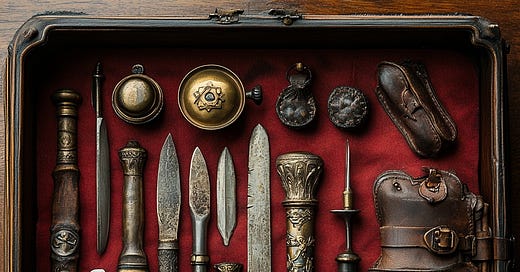If you’re like me, whenever someone says “medieval medicine,” you see leeches. And maybe scalpels and lots of blood. Those medieval doctors! If you had a problem, the answer was usually to bleed it off. And look how that turned out.
That is the moral of a very misguided story. Today, we think of bodily fluids as necessary, but we ignore them unless something is wrong. They’re basically contaminants.
Traditional European medicine had a very different view. Fluids contained a vital essence—the very spirit that gives you life. They were not something to be ignored so much as managed, and if you pay attention to the body’s signs, you’ll know how to do that.
For the past five years, I’ve been studying the similarities between Traditional European Medicine and other holistic systems—in particular, Traditional Chinese Medicine (TCM). Both systems have very similar beliefs about energy, which they call spiritus and chi.
At first glance, the European system emphasizes bodily fluids and talks about spiritus as a life force energy, without giving a whole lot of medical context.
In TCM, however, there is an elaborate understanding of chi—where it’s located, how it affects the body, and how to manipulate it through various means.
It’s like Europeans got the memo but maybe didn’t read it. And the Chinese wrote the memo.
But I think this is selling the European system short. (We do that.) (A lot.) It turns out they knew much more than we give them credit for.
Spiritus
In the European tradition, spiritus is our basic life force energy that comes in on the breath and through the foods that we eat. In either case, it gets turned into blood.
One way to affect spiritus was to access the blood, which was done through phlebotomy.
The practice of phlebotomy, or bloodletting, was done at certain points on the body. You didn’t just slap on a leech. Incisions were made at precise locations that were determined with the help of practice and charts.
Today, people happily accept the notion that physicians were doing this to drain off some vaguely “bad humors,” but it’s more appropriate to say that they were relieving blood congestion or reducing “heat” in the blood.
Hot-blooded
Spiritus was the cause of all function in the body, and like energy everywhere, it produced heat.
This heat was the primary way that imbalances of spiritus were diagnosed.
If someone had a fever, a physician would view that as an abundance of heat—i.e. too much spiritus. If the fever became dangerous, they might draw off the excess spiritus through bloodletting.
But heat was a massive concept in traditional medicine. Hot and cold are the “yin and yang” of European medicine (and of TCM as well, in fact). So a lot of things were hot that weren’t actually hot. It could be used to describe any state of agitation, inflammation, infection, or pain.
Plants could be “hot,” because, when ingested, they caused certain actions in the body that contributed to “heat,” which is warmth, of course, but also other things like metabolic flow, sharpness of mind, and physical stamina.
As a result, bloodletting, which could remove or adjust heat, could be used for many diseases, but the basic principle was often the same: to manage the flow of spiritus.
Interestingly, it turns out there is a strong overlap between phlebotomy points and acupuncture points.
In this 2019 study, researchers discovered that 40 percent of medieval phlebotomy points matched those of modern acupuncture, and over half of their uses were the same.
So Traditional European Medicine clearly had a sense of energy points on the body, and the fact that energy moved through the body in regular enough patterns that you could locate those points on people in general.
Next time someone says “medieval medicine,” you can picture a woman (they had those, too) bending over a patient, trying to find the inter pollicem et indicem (the spot between the thumb and forefinger). She’d be contemplating whether to make a small incision and drain off a little blood, or simply massage the point with plant oil or unguent, probably to relieve headache or redness of the eyes.





